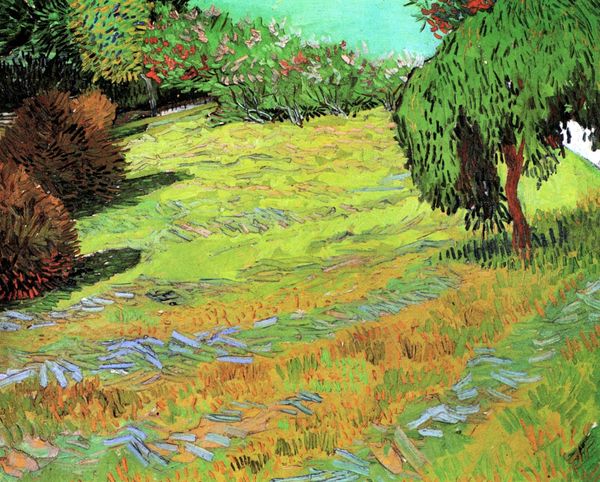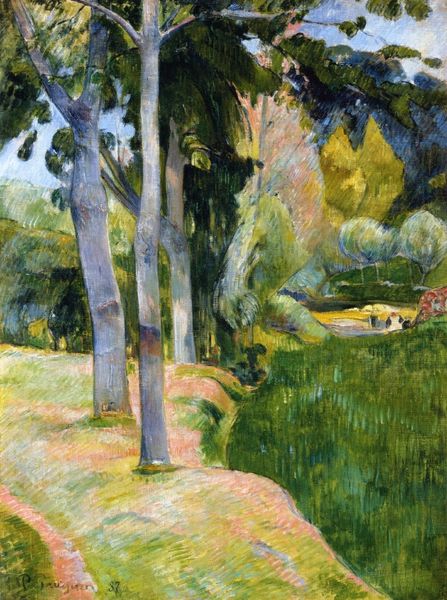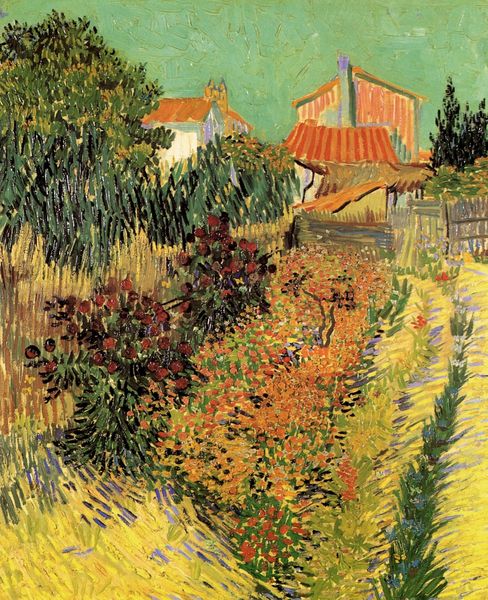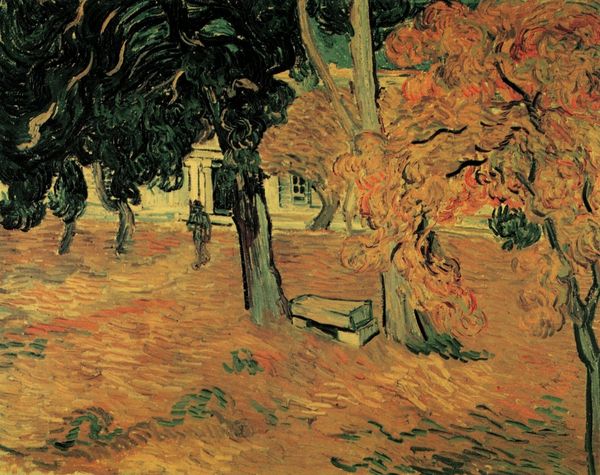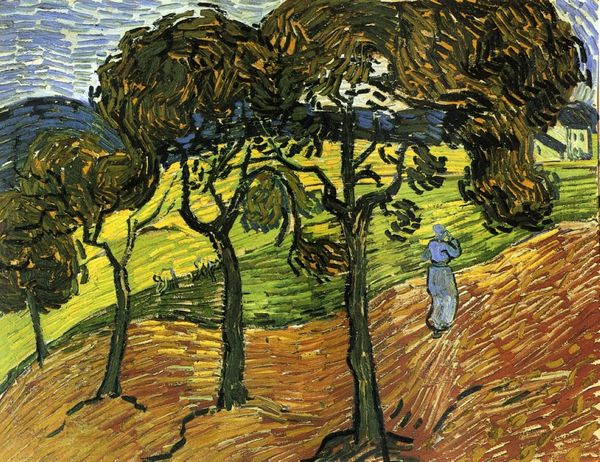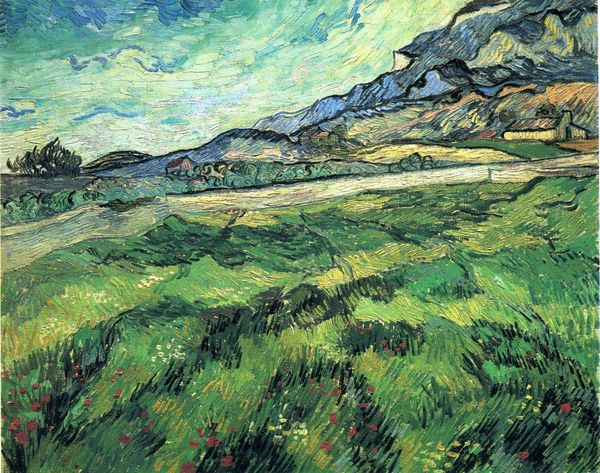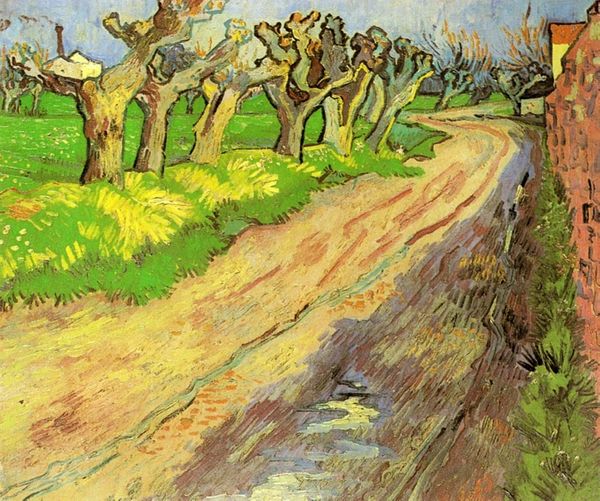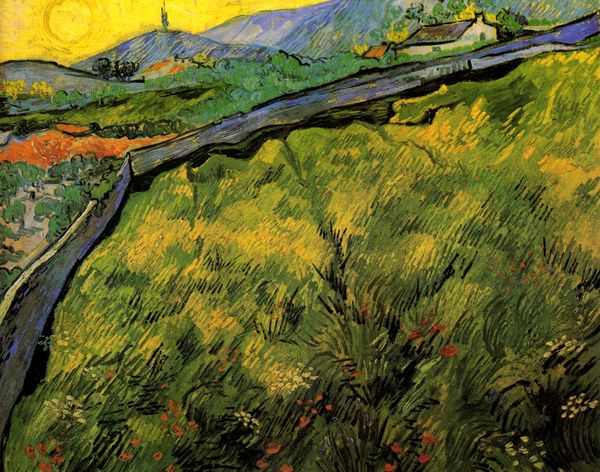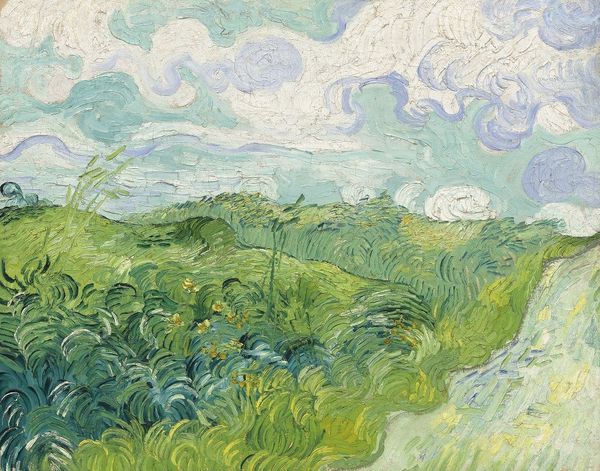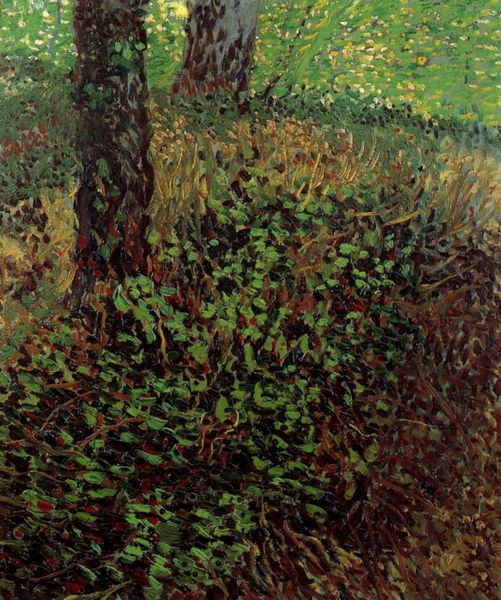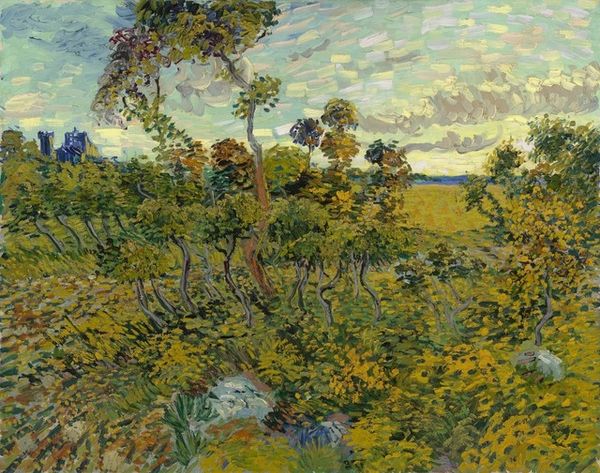
painting, plein-air, oil-paint, impasto
#
tree
#
garden
#
painting
#
impressionism
#
grass
#
impressionist painting style
#
plein-air
#
oil-paint
#
landscape
#
perspective
#
impressionist landscape
#
impasto
#
geometric
#
plant
#
natural-landscape
#
park
#
post-impressionism
#
naturalism
#
modernism
Dimensions: 73.5 x 60.5 cm
Copyright: Public domain
Curator: Standing before us is Van Gogh’s "Garden with Weeping Willow," painted in 1888. Editor: There's an immediate rawness, isn't there? The landscape practically vibrates with those heavy strokes of color. You can feel the thick impasto, like you're stepping into the garden itself. Curator: Absolutely. It reflects Van Gogh's intense engagement with the physical world and his desire to represent subjective experience. The setting— likely a garden near Arles— speaks to the transformative power of landscape in his oeuvre, but is also, literally, garden-variety: these scenes are what he had ready access to. Editor: What strikes me most is his technique. The sheer physicality of the paint—each brushstroke, almost sculptural— transforms the ordinary into something almost… agitated. You know, I wonder where his paint tubes were made, what pigments were easily accessible at that time… Curator: An interesting question! Such a consideration might frame what kinds of landscapes are achievable through the markets. Still, the expressive distortion—particularly in that weeping willow— transcends mere representation. We can certainly say it anticipates later Expressionist tendencies. Art historians link the motif of the willow to themes of mourning and emotional turmoil during that time. Editor: True, but look at how the canvas seems almost woven together by these rhythmic, visible marks. He’s forcing us to confront not just the scene, but the very *labor* of painting it. It highlights this constant tension, one that resonates with much craft of the time as an art form trying to distinguish itself from industrial reproduction, something that arguably shapes the image’s status. Curator: An insightful connection, grounding it within that late 19th-century art world dilemma. Overall, viewing this work calls upon our sensitivity toward both visible, but also invisible elements that went into this striking, if rather quiet, picture. Editor: I agree completely! There’s a restless energy but also tranquility in the selection, processing and re-presentation of these basic materials and forms.
Comments
No comments
Be the first to comment and join the conversation on the ultimate creative platform.
